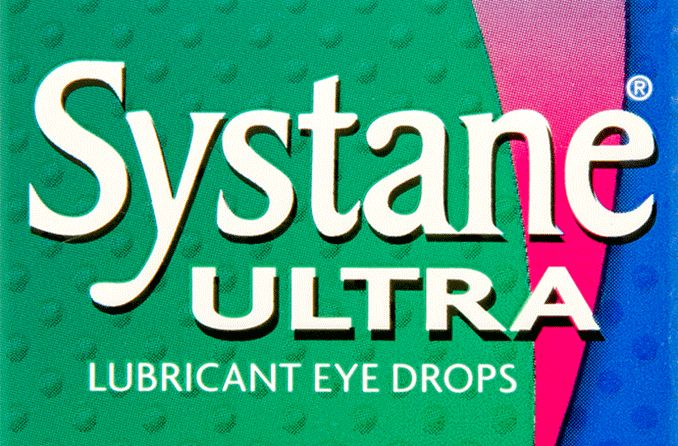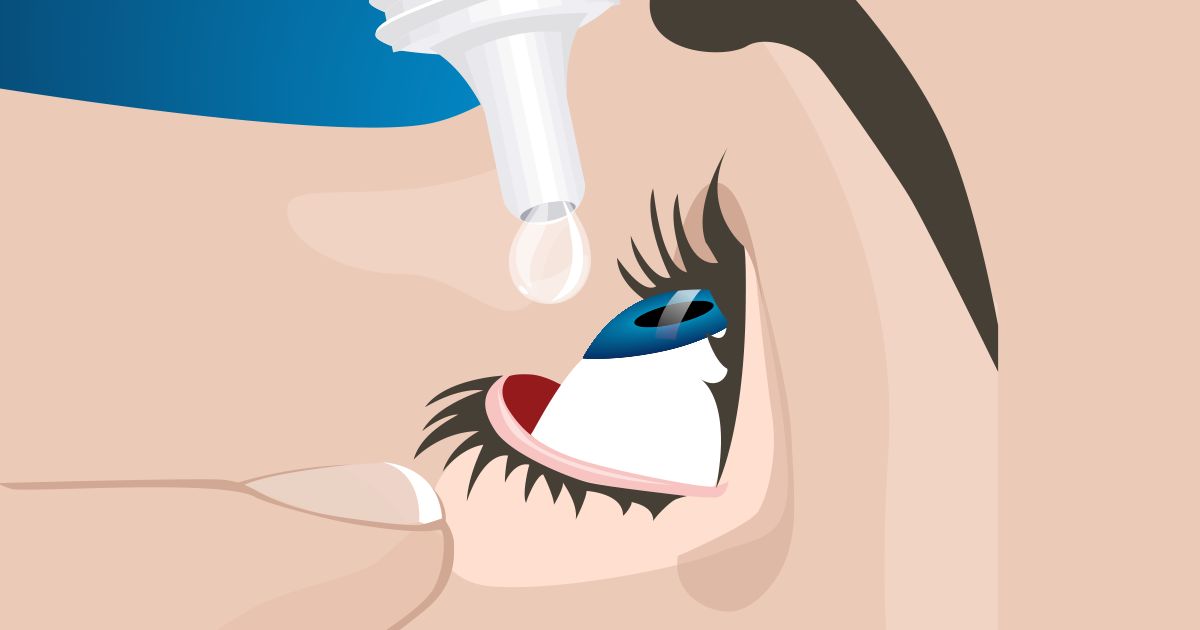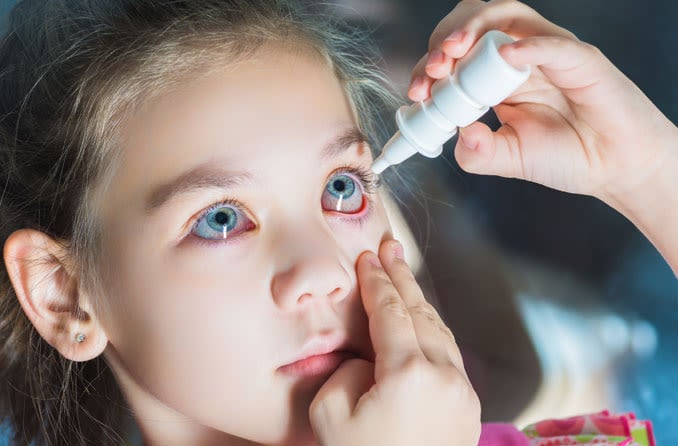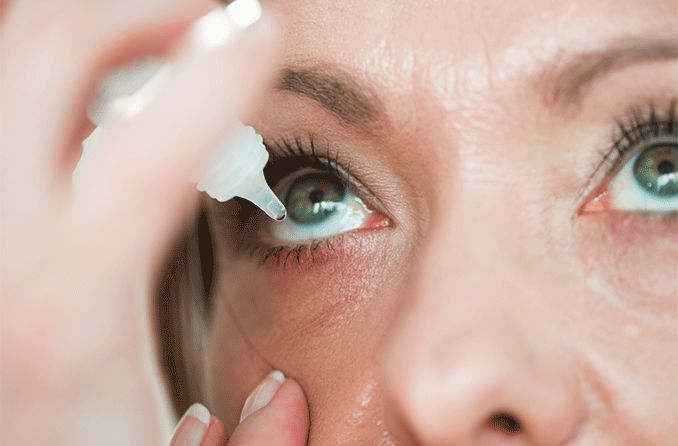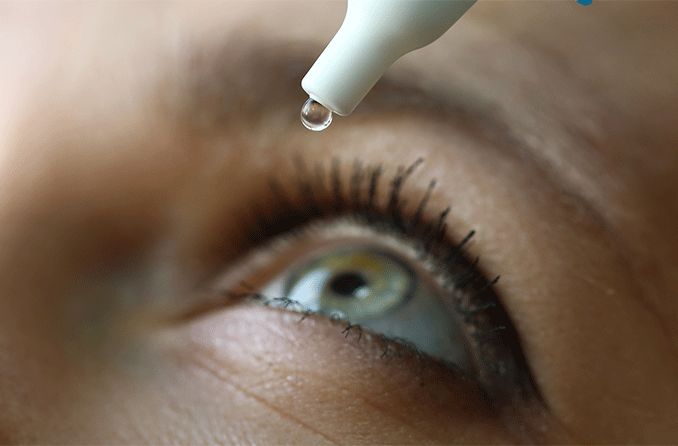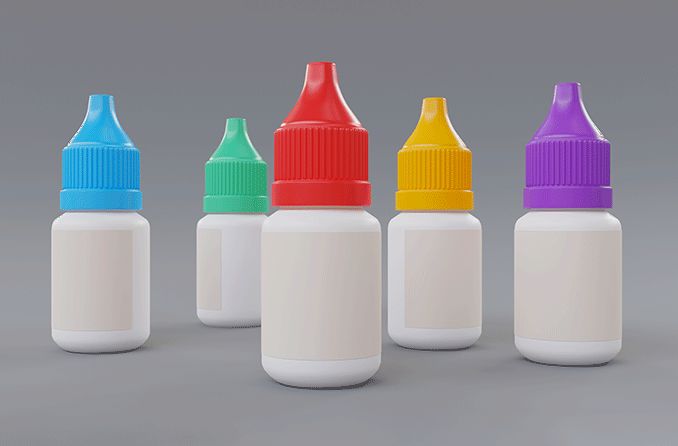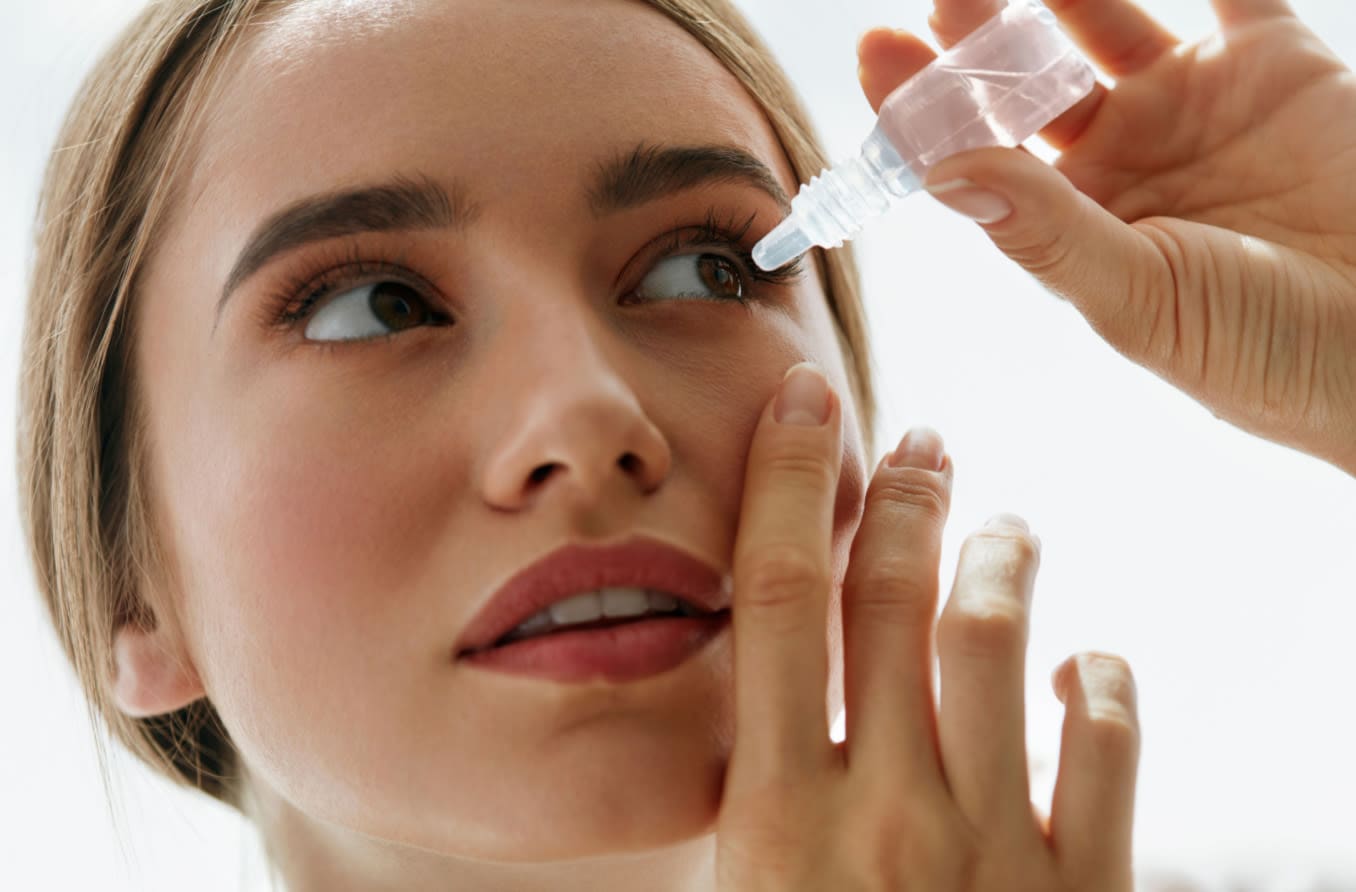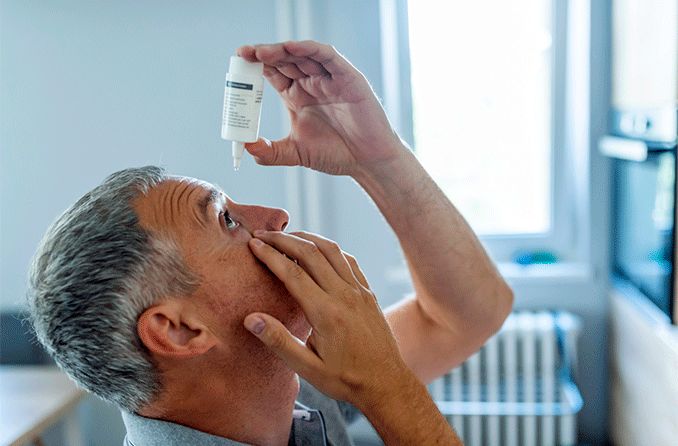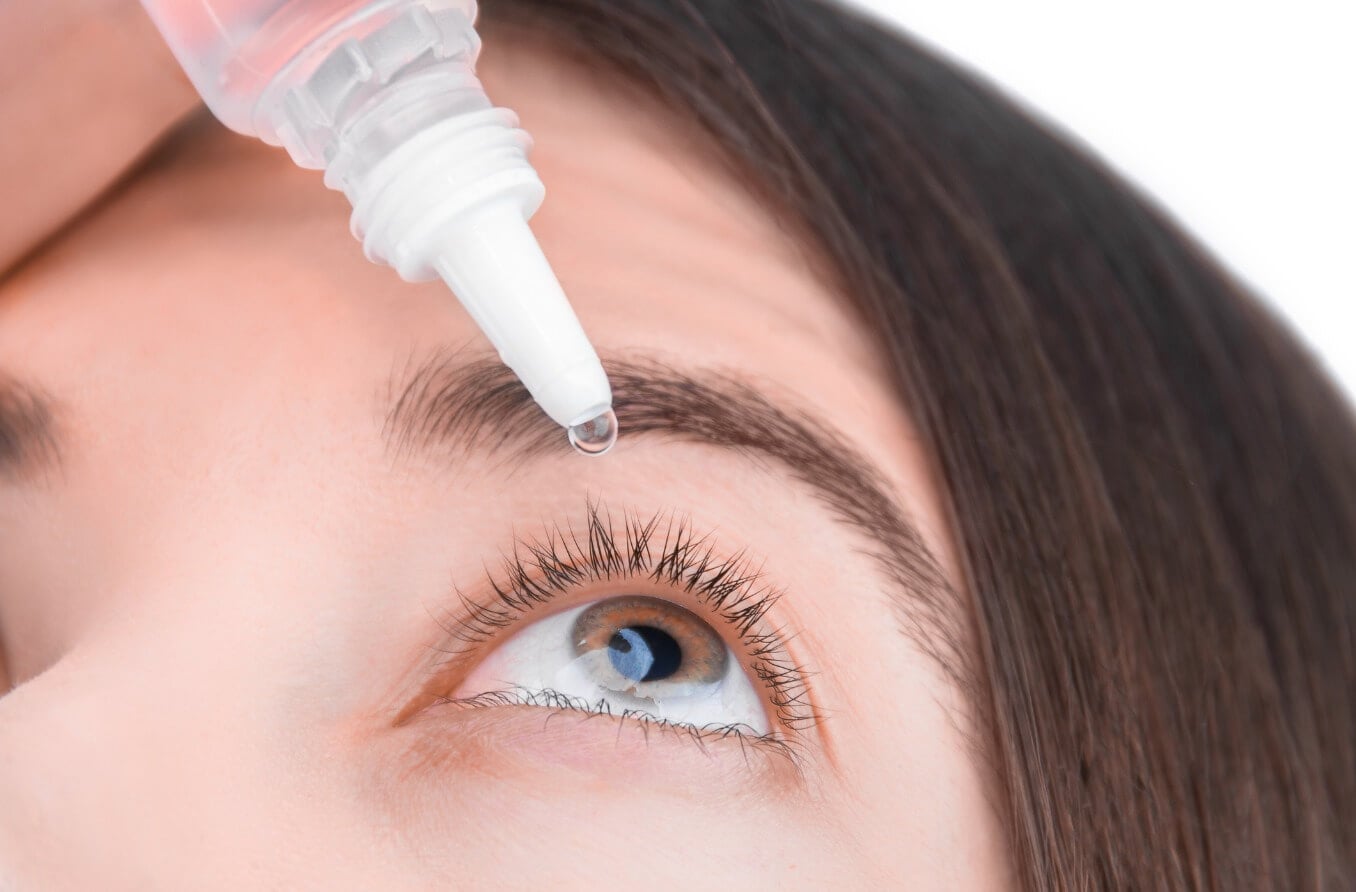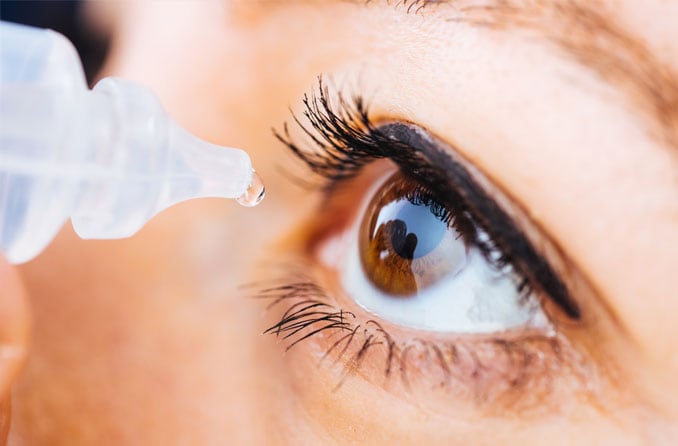When you look at all the eye drops available at your local grocery store or pharmacy, the sheer number and variety can be overwhelming. Even within the Systane family of eye care products, there are many options, and for temporary relief of eye dryness, Systane Ultra Lubricant Eye Drops are both mild and effective.
Here’s more about Systane Ultra: what it’s used for, its ingredients, how to use it, and what makes it different from other eye drops.
Systane Ultra eye drops for the relief of eye dryness
When your tear ducts don’t provide enough lubrication, your eyes can feel dry and uncomfortable. There are a number of factors that can cause this to happen, including:
- Environmental factors, such as ceiling fan use or an arid climate
- Medication side effects
- Contact lens wear
- Computer use
- Infection
- Allergies
- Aging
- Smoking
- Certain health conditions
While Systane Ultra drops are specifically indicated “for the temporary relief of burning and irritation due to dryness of the eye,” there are other symptoms of dry eye, such as:
- Redness – Red eyes, sometimes called bloodshot eyes, happen when the tiny blood vessels in the white portion of the eye expand, giving the eyes a pink or red appearance. Eye redness can be a sign of dry eyes, infection or allergies. Though the discomfort is generally minor, people sometimes feel self-conscious about eye redness.
- Itching – Often, the biggest challenge with itchy eyes is resisting the urge to rub and scratch. It’s important to avoid this so you don’t introduce any new irritants to your eye, which can exacerbate the problem.
- Soreness – When caused by dry eye syndrome, aching in and around the eyes generally isn’t something to worry about. In rare cases, it can be a symptom of inflammation or damage to the optic nerve, so if you have soreness that persists, contact your eye doctor.
- Discharge – Eye discharge, sometimes called “sleep” or “eye gunk,” is the body’s response to irritation caused by dryness, allergies, infection or other irritants.
Eye drops like Systane Ultra artificial tears can bring relief from most of these symptoms.
Systane Ultra ingredients
While some more chronic eye conditions require prescription medication, most people experiencing mild, periodic discomfort from dry eyes can generally find relief with over-the-counter (OTC) eye drops such as Systane Ultra by Alcon.
These drops specifically address burning and irritation by lubricating the eyes. The active ingredients in Systane Ultra drops are polyethylene glycol 400 (0.04%) and propylene glycol (0.3%).
- Polyethylene glycol 400, also known as artificial tears, reduces friction between the surface of the eye and the eyelid. It also increases the viscosity of existing tears so that they evaporate more slowly.
- Propylene glycol is a synthetic liquid that forms a protective layer over the mucus membranes of the eye to reduce inflammation and irritation.
Both substances have been thoroughly tested and, unless a person is specifically allergic to polyethylene glycol 400 and/or propylene glycol (which is rare), the drops are indicated for safe use.
Are Systane Ultra eye drops safe to use?
Your eyes are delicate sensory organs, protected only by a thin layer of mucus membrane. You should always be careful what you put in and near your eyes.
While it is generally safe to use Systane Ultra with contact lenses, it’s probably a good idea to give your eyes a break from contacts if they’re feeling dry. It’s also important to remember that not all eye drops are contact-friendly, so be sure to read the label and instructions carefully before using any drops, and consult with your eye doctor if you have any questions.
To avoid eye infection, keep the tip of the applicator clean (i.e., don’t touch it). And if your eye drops turn cloudy, they should be disposed of and replaced.
Systane eye care products
The Systane family of products includes:
- Systane Ultra Lubricant Eye Drops
- Systane Ultra Preservative-Free Lubricant Eye Drops
- Systane Complete Lubricant Eye Drops
- Systane Balance Lubricant Eye Drops
- Systane Lubricant Gel Drops
- Systane Lubricant Eye Gel
Check out the Systane product page for more details.
Eye drops vs. gel drops
The main difference between eye drops and eye gel is the viscosity, which in turn affects how long the relief of symptoms lasts. Eye drops provide quick relief for hurting eyes, but their thin, watery consistency means they can evaporate quickly.
Because gels are much thicker than drops, they continue to work for a longer period of time. Unfortunately, this thickness can cause blurred vision, so eye gels and gel drops are typically suggested for use at night, when most people won’t be hampered by any impaired vision.
If you have more than one type of eye treatment in your routine, it’s best to use the gel last. And, if you wear contact lenses, they should be removed before a gel treatment is applied:
- Apply the most fluid (wateriest) drops first and allow them to absorb into the eye(s).
- If you wear contacts, remove them before applying any eye gel.
- Apply eye gel.
Doing these steps in reverse may impede absorption of the regular drops and make it difficult to get contacts out.
Eye drops: With or without preservatives?
Preservative-free drops are great for people with particularly sensitive eyes or for individuals who use their eye drops more than four times a day.
In addition to Systane Hydration Preservative-Free Eye Drops and Systane Original Preservative-Free Lubricant Eye Drops, Alcon also offers Systane Ultra preservative-free eye drops in 0.7mL, single-use vials.
Each vial remains sealed until use and is disposed of immediately afterward, so bacteria and fungi have no opportunity to grow or spread. If you find that even Alcon’s Polyquad preservative is irritating your eyes, Systane Ultra preservative-free vials may be a good option for you. Ask your doctor or ophthalmologist.
Administering eye drops
Eye drops can be a little tricky to administer at first, but with a little practice, it gets easier. Just follow these steps:
- Wash your hands to avoid introducing any contaminants into your eyes.
- If you wear contacts and your eye drops aren’t contact-friendly, take your contacts out.
- Avoid touching the applicator tip, and drop the liquid directly into your eye.
- If any excess drops run down your cheek, you’ve probably applied too much.
If your first attempt goes poorly, don’t fret. Developing your skills at eye drop application may take a few tries, and you are not alone.
READ MORE: How to put in eye drops
Where to get Systane eye drops
Over-the-counter Systane Ultra eye drops can be purchased in various sizes, including 10mL, 30mL and preservative-free, single-use 0.7mL vials, both online and in stores. Printable coupons are also available online.
How long can you keep eye drops?
Another way to lower cost per ounce is to buy in bulk. Just keep in mind that you should not use eye drops that have expired.
You should also avoid using eye drops that have been open for more than 28 days or that have changed color or consistency in any way.
When to see a doctor
If you’re suffering from dry eye syndrome, Systane Ultra eye drops may be able to help. However, if you notice any new redness or irritation after using the drops, or you still don’t feel any relief after a few days, contact your eye doctor to schedule an exam.
